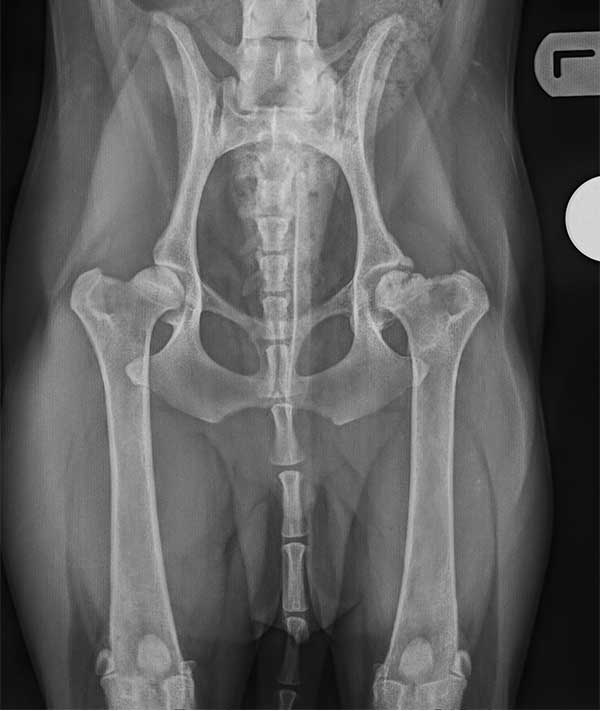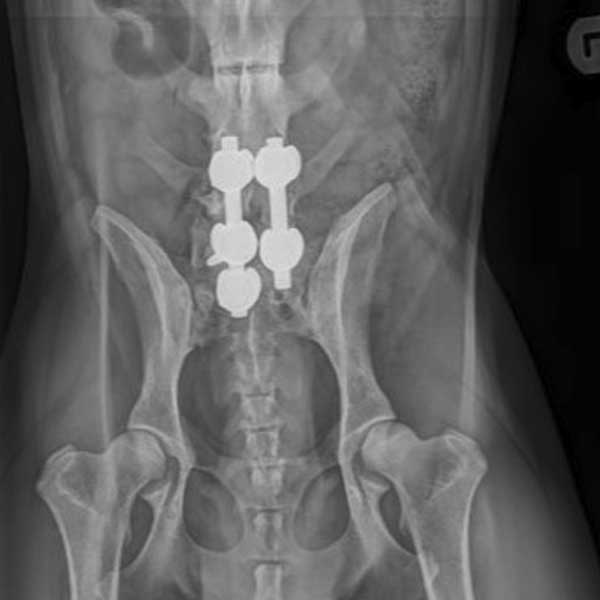Kabo, 10-month-old, ME, Crossbreed dog.
Kobe presented at 10 months of age with a 4-week history of progressive left pelvic limb lameness. The owners had noticed an awkward gait with internal rotation of the limb during weight bearing.
Referring vets had localised the pain to the left hip joint. Response to conservative management had been poor and radiographs of the hips were taken which showed a regular outlined femoral head associated with lytic loss of the subchondral bone. There was secondary remodelling of the acetabulum associated with the femoral head pathology
The radiographic findings were consistent with avascular necrosis of the femoral head (Perthes Disease). Perthes disease is a congenital condition that primarily affects small breed dogs (toy breeds
and terrier type dogs). It results from disruption of the blood supply that feeds the femoral head. Initially, the overlying cartilage of the femoral head remains unaffected as it derives its nutrition from the synovial fluid. As the subchondral bone is lost, deep clefts or cavities develop and the cartilage starts to collapse into the defects. This results in progressive severe pain and disuse that is poorly responsive to medical management.
Perthes disease is a surgical condition. The two main options for treatment are Femoral Head and Neck Excision (FHNE) and Total Hip Replacement (THR). Whilst FHNE generally results in acceptable
function, patients that have this procedure rarely recover normal muscle mass on the operated limb indicating less than optimal function. THR has been shown to be the gold standard for restoring
pain free normal function to the canine diseased hip, with canine and feline patients able to return to normal active living with complete recovery of muscle mass. After discussion of the potential
complications and the benefits of each surgery, Kobe’s owners elected to perform THR on the left hip.
At Eden Vets, we have over 13 years of experience with the Kyon cementless THR system. This provides exceptional biocompatibility and robust osseous integration of the femoral and acetabular implants
into the native bone. Kobe’s surgery went very well and he recovered rapidly. Limb usage was excellent the day following surgery and he has gone from strength to strength and is now back to normal off
lead activities. This case highlights that THR can be used to treat a variety of hip joint pathology and is not just limited to hip dysplasia/OA cases. If you have any cases where pain/pathology is localised
to the hip, please give us a call to discuss options for your patient. The Kyon hip can be used in bothcanine and feline patients.





